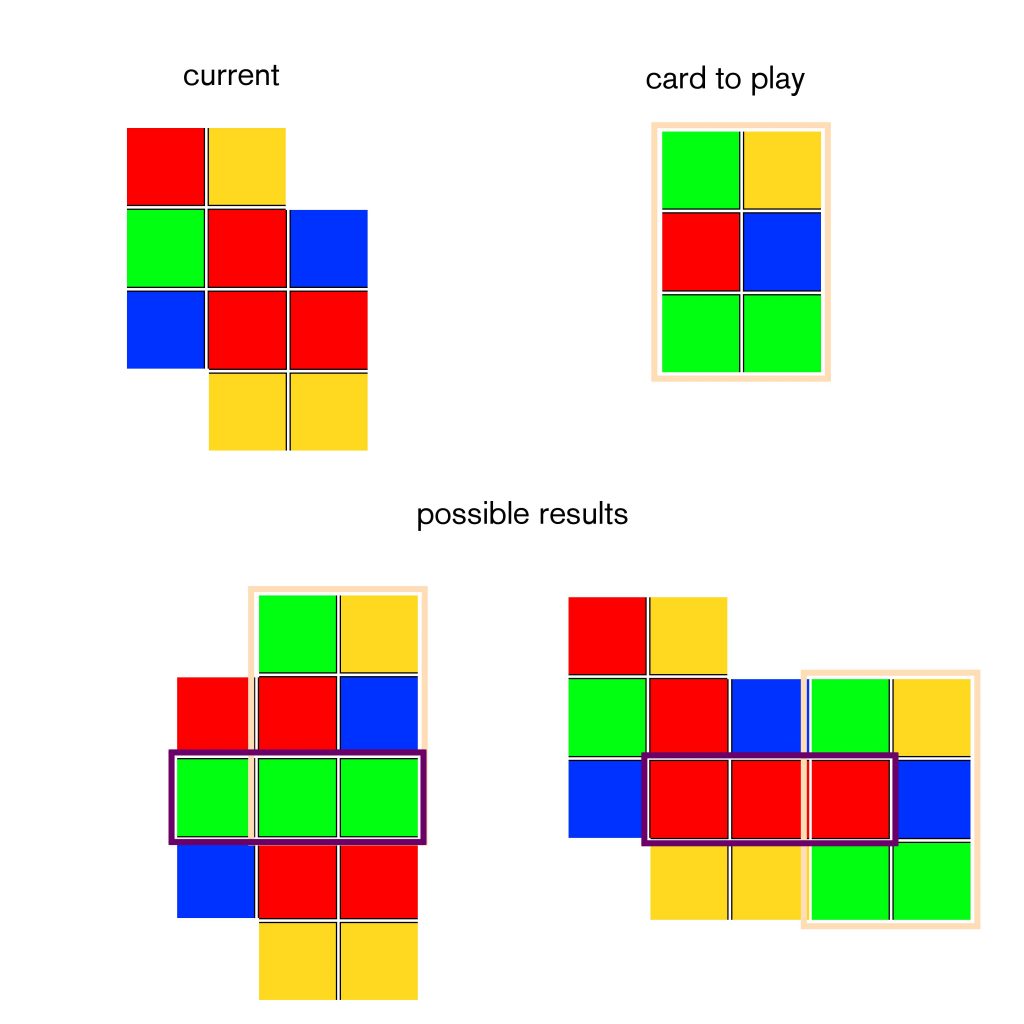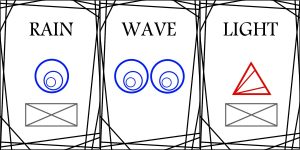Following from the previous studies, I have decided to augment the game to suit the generative properties better.
The main difference: Instead of playing cards and removing them, players now play cards which stay on the board permanently.
New cards can be played over old cards, which card create generative patterns which suit the player’s needs in the point of the game, yet opens interesting end results more unique than a mere win/lose.

A card would have a 3×2 combination of designs on it. When a player would place a card onto the board, they can play it overlapping or adjacent to their existing board, in attempts to create chains of 3, or more specific patterns as the game goes on. Players have the freedom where they would place their new card, which card result in more interesting board states as shown above.
Topic: Surprise
Some of the aspects to reflect on:
– What constitutes surprise?
– What determines its qualities?
– How surprise figures in different contexts such as the arts, everyday life, technology (e.g. in classical information theory by Claude Shannon), etc.?
– How does it figure in your own life and experience?
– Find out and explore other features of surprise.
Surprise elements can be applied by having unexpected results by betraying expectations set. To do so, first we have to set expectations for the user, then twist the outcome that does not follow the expectations.
Positive Surprises can include low odds of a positive bonus, something a player is aware that they exist, but unlikely enough for them to set an expectation not to get it, for example a low chance of a “critical hit”. Getting something more out of an expectation already made is generally a pleasant surprise. Meanwhile Negative Surprises are the opposite, and in the case of a cautious or pessimistic individual, a negative surprise should be outside any predefined expectations. It has to enter from outside the realm of what a player should be expecting or prepared for. To balance a surprise while not taking away the enjoyment of the game is something to be defined carefully.
Post to be updated after presentation







